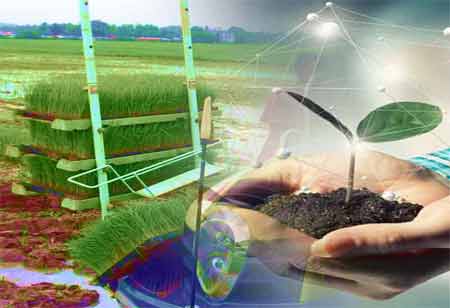Thank you for Subscribing to Agri Business Review Weekly Brief
Agtech Innovations Transforming Agriculture in APAC
The agriculture sector within the Asia Pacific (APAC) region is experiencing a notable evolution propelled by innovative technological advancements commonly referred to as Agtech.

By
Agri Business Review | Tuesday, February 20, 2024
Stay ahead of the industry with exclusive feature stories on the top companies, expert insights and the latest news delivered straight to your inbox. Subscribe today.
The Asia Pacific agriculture sector is undergoing significant transformation with Agtech advancements, enhancing farmers' capabilities and ensuring food security by integrating innovative technologies.
FREMONT, CA: The agriculture sector within the Asia Pacific (APAC) region is experiencing a notable evolution propelled by innovative technological advancements commonly referred to as Agtech. Farmers across the region are increasingly adopting these technologies to enhance crop yields, streamline resource utilization, and fortify their operations against the challenges posed by climate change.
Agtech Trends Reshaping APAC Agriculture
Data-Driven Decision-Making: In precision farming, advanced technologies such as sensor networks, drones, and satellite imagery are actively employed to gather real-time data about soil health, crop growth, and weather patterns. The assimilated data is subjected to meticulous analysis through AI algorithms, furnishing farmers with highly accurate recommendations for irrigation, fertilizer application, and pest control tasks. The implementation of these insights results in enhanced operational efficiency and a reduction in wastage.
Concurrently, predictive analytics, facilitated by machine learning models, plays a pivotal role in forecasting crucial aspects like crop yields, disease outbreaks, and market prices. This foresight empowers farmers to strategically plan their agricultural activities, mitigate potential risks, and optimize profitability. By leveraging these innovative technologies, the farm sector benefits from informed decision-making and sustainable practices.
Automation and Robotics: Integrating autonomous tractors and drones represents a transformative shift in agricultural practices. Self-driving tractors have assumed responsibility for routine tasks such as plowing and planting, while drones are utilized for aerial spraying, crop monitoring, and yield estimation. These advanced technologies mitigate labor costs and enhance precision, allowing farmers to redirect their focus toward more strategic and high-value activities. Additionally, deploying robotic systems in tasks like harvesting fruits and vegetables, weeding fields, and milking cows contributes to heightened productivity and effectively addresses labor shortages prevalent in certain regions. This paradigm shift towards automation indicates the agricultural sector's commitment to leveraging innovative solutions for sustainable and efficient practices.
Sustainable Solutions: In regenerative agriculture, advancements in agricultural technology (Agtech) are facilitating the widespread adoption of practices aimed at enhancing soil health, promoting biodiversity, and fostering carbon sequestration. These progressive approaches encompass the implementation of cover cropping, embracing no-till farming methods, and integrating biofertilizers into agricultural processes.
Simultaneously, the agricultural landscape is witnessing a surge in the popularity of vertical farming, particularly in urban settings where land availability is constrained. Indoor farming systems, characterized by controlled environments, are proving instrumental in enabling year-round production cycles. Notably, these systems contribute to the conservation of water resources and the reduction of pesticide usage, marking significant strides toward sustainable and efficient agricultural practices.
Financial Inclusion and Market Access: In financial technology solutions, digital platforms have emerged as pivotal facilitators for farmers, offering accessible avenues for obtaining loans, insurance, and various financial services, predominantly through mobile applications. This empowerment equips farmers with the capacity to invest in innovative technologies, proactively manage risks, and enhance their overall livelihoods. Concurrently, the advent of online marketplaces, exemplified by industry giants, has revolutionized the agricultural landscape. These platforms eliminate intermediary layers by directly connecting farmers with consumers, thereby augmenting farmers' profit margins. Additionally, this direct linkage fosters heightened transparency and traceability throughout the food supply chain, promoting a more accountable and efficient agricultural ecosystem.
The agricultural landscape in the region is poised for significant transformation, driven by the integration of innovative Agtech solutions and the abundant agricultural resources available. Despite challenges, the concerted efforts of public and private sector stakeholders present a hopeful trajectory towards a future in which Agtech enhances the capabilities of farmers, preserves resources, and guarantees food security for a burgeoning population—embracing these advancements with a commitment to responsibility and inclusivity positions APAC agriculture to flourish and also to set an example for sustainable and resilient food systems globally.





